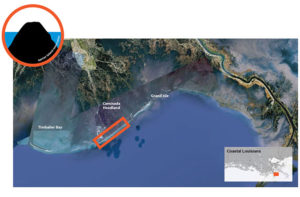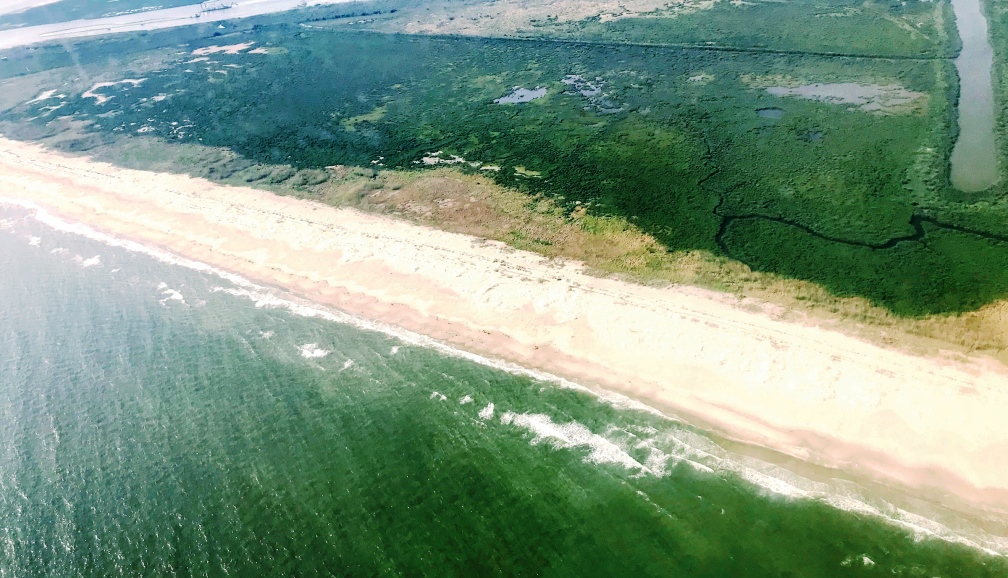For the second time in recent years, the Louisiana Coastal Protection and Restoration Authority (CPRA) has been named a national winner for Best Restored Beaches from the American Shore and Beach Preservation Association (ASBPA).
CPRA’s Caminada Headland Beach and Dune Restoration project restored more than 13 miles of beach and dune stretching from the mouth of Bayou Lafourche below Port Fourchon in Lafourche Parish eastward to the end of Elmer’s Island in Jefferson Parish.
“CPRA has restored more than 60 miles of barrier islands, beaches and dunes, but this is the largest single ecosystem restoration project the State has ever undertaken,” said Lousiana Gov. John Bel Edwards. “It sets the stage for even larger projects along our coast and further inland as we restore our land and marshes that are vital to the protection of our homes, families, business, infrastructure, and our very way of life. The men and women of CPRA who work tirelessly to restore and protect our coast are well deserving of this special honor.”
 The project restored more than 1,059 acres of beach, dune and subtidal habitats by placing more than 8.8 million cubic yards of sand from the Ship Shoal Borrow Area in the Gulf of Mexico, more than 36 miles from the project.
The project restored more than 1,059 acres of beach, dune and subtidal habitats by placing more than 8.8 million cubic yards of sand from the Ship Shoal Borrow Area in the Gulf of Mexico, more than 36 miles from the project.
Nearly 200 sea turtles were successfully relocated from the borrow area to adjacent foraging grounds, and more than 195,000 native plants and nearly 72,500 linear feet of sand fencing were installed to promote the conservation of sand on the island.
“This project protects Port Fourchon, one of the most critical pieces of infrastructure along coastal Louisiana, as well as thousands of acres of marsh along the LA-1 Corridor. The Caminada Beach Headland project serves as a prime example of how our projects can protect critical infrastructure, create coastal habitat, and preserve a working coast,” said CPRA Board Chairman Chip Kline. “It should also be known that similar types of projects are slated to be constructed in the very near future across South Louisiana to help restore our coast and better protect our coastal communities,” he added.
Port Fourchon is Louisiana’s largest oil and gas drilling services facility servicing over 90 percent of the Gulf of Mexico deepwater oil production and more than 400 large supply vessels use the port’s channels each day. Port Fourchon plays a strategic role in supporting the production of approximately 18 percent of the country’s entire oil supply.
“The increased protection this restoration provides to our port facility is already paying dividends,” said Greater Lafourche Port Commission Executive Director Chett Chiasson. “Word has gotten out about the huge improvements the state has made here, and the commitment to our security is sparking serious discussions with a number of companies interested in moving to our facility or expanding their investment here. We’re talking about many millions of dollars in economic development.”
Planning and design for the restoration had just begun when the Deepwater Horizon disaster occurred. Essential cleanup efforts delayed critical surveys, and a tropical storm and a hurricane then battered the area, further complicating and delaying construction.
“The project was accomplished in two increments, each with different funding sources,” said CPRA Executive Director Bren Haase. “Construction of Increment One on the western side started in June 2013 and was completed in January 2015 using Coastal Impact Assistance Program and State Surplus funds. Increment Two was funded through the Gulf Environmental Benefit Fund established by the National Fish and Wildlife Foundation (NFWF) in the wake of the Deepwater Horizon oil spill. Increment Two extended the project eastward through Elmer’s Island to Caminada Pass and was completed in November 2016. NFWF was a tremendous partner in the project–we couldn’t have done it without them.”
With limited nearshore sand resources available as a borrow area, CPRA turned to Ship Shoal, an ancient remnant delta now a part of the Outer Continental Shelf in the Gulf of Mexico. CPRA worked cooperatively with the U.S. Dept. of Interior through the Bureau of Ocean and Energy Management (BOEM) to acquire a lease to mine its rich supply of sand, estimated at about 900 million cubic yards.
“We used two methods of sediment excavation and delivery,” said CPRA Project Manager Brad Miller. “One method used a cutter head dredge to load scows with sand, then transported the scows as much as 30 miles to the project site where an unloader resuspended the sediment and pumped it to the beach. We also made use of hopper dredges to excavate sediment, sail it to a nearshore pump-out area near the headland, and then pump it to the beach.”
ASBPA, formed in 1926, is an association of beach and coastal practitioners, including beach towns and managers, coastal engineers, coastal geologists, dredging and ecological restoration companies, coastal academics and students. It seeks to address coastal erosion and the loss of sand on America’s beaches.
Since 2002 ASBPA has made annual awards to communities that have recently undergone nourishment or full restoration.
Photo of Caminada Headland Beach courtesy of CPRA.

